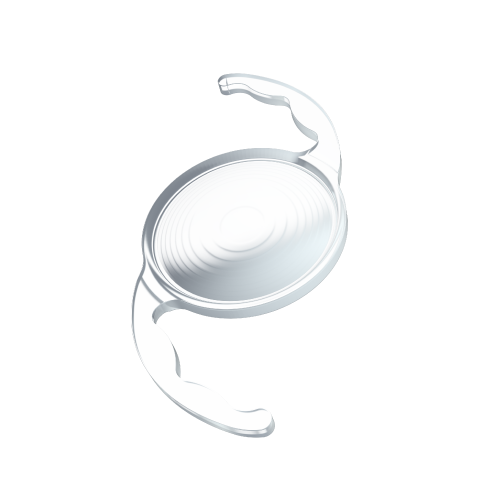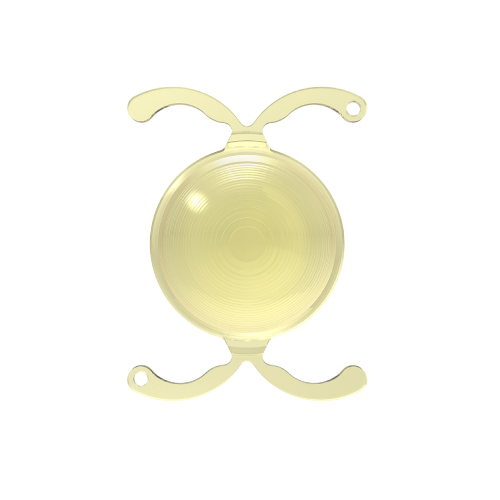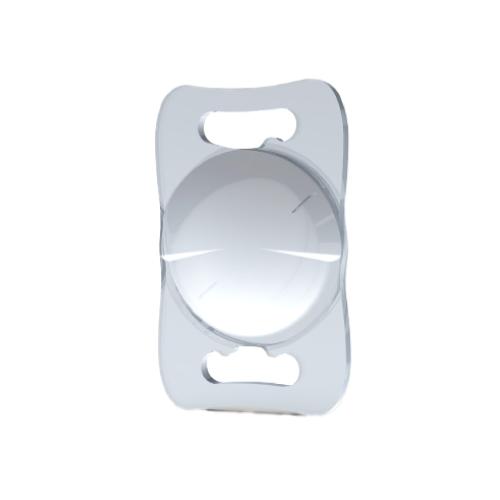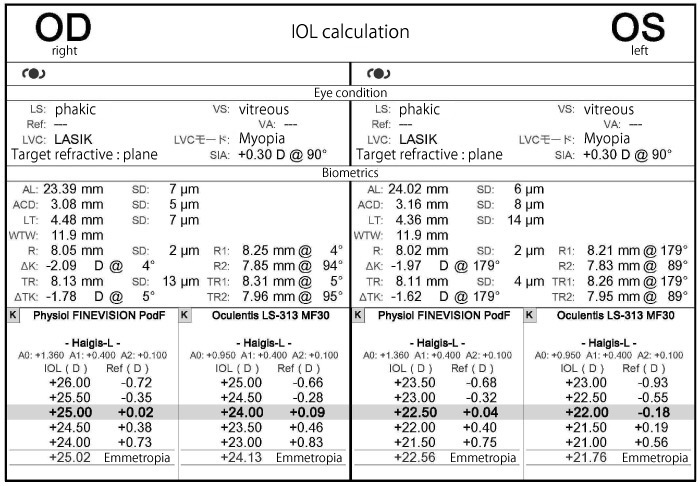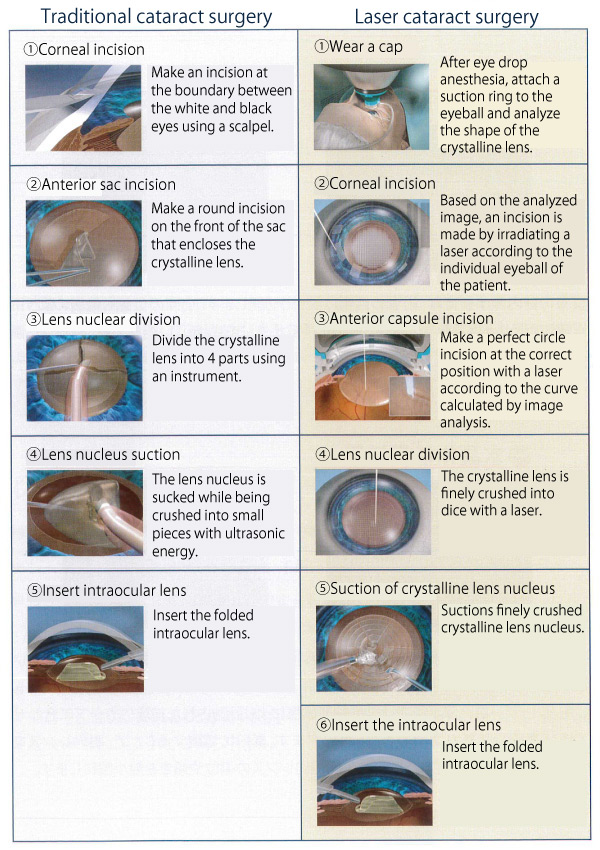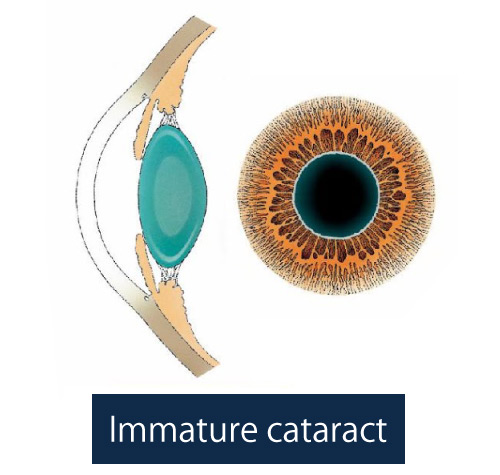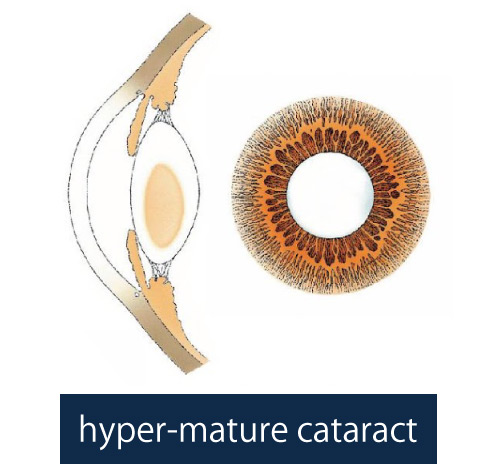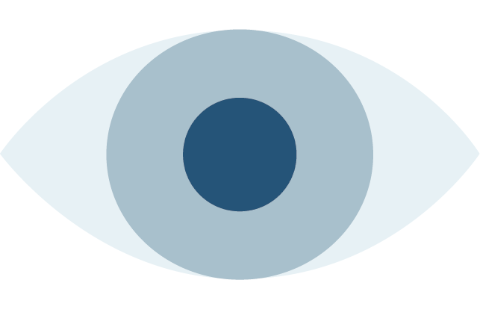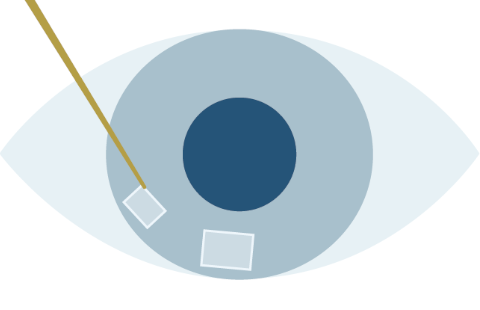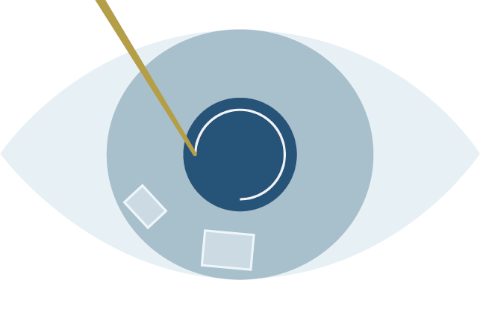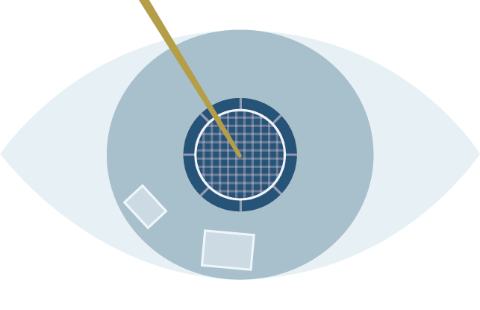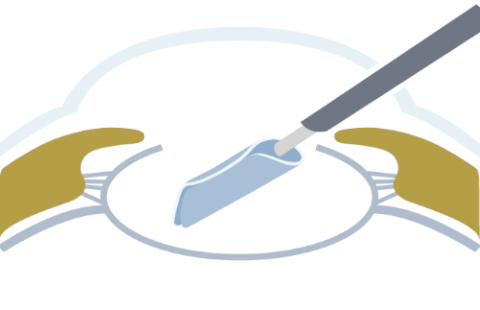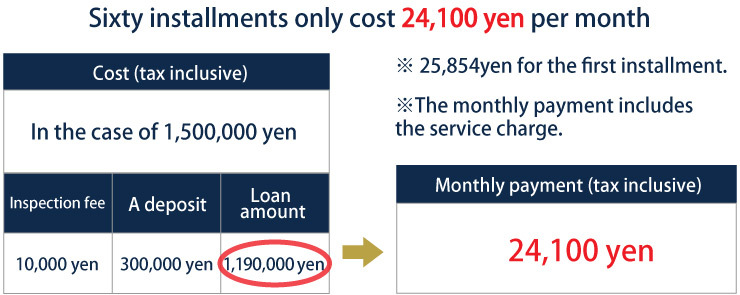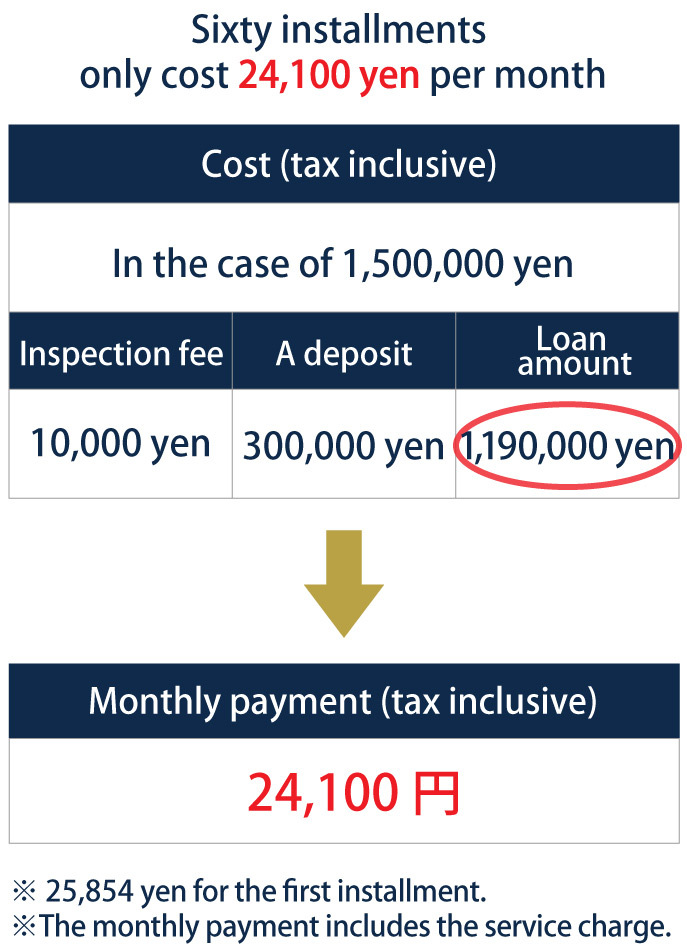-
What is cataract?
Cataract is a disease in which the originally transparent crystalline lens becomes cloudy in grayish white or brown.
The lens acts as a camera lens and has the function of refracting light coming in from the outside to focus on the retina, which is a very important tissue for seeing things.
The lens is made up of water and protein, which gradually denatures and becomes cloudy due to oxidative stress such as aging and long-term exposure to ultraviolet rays.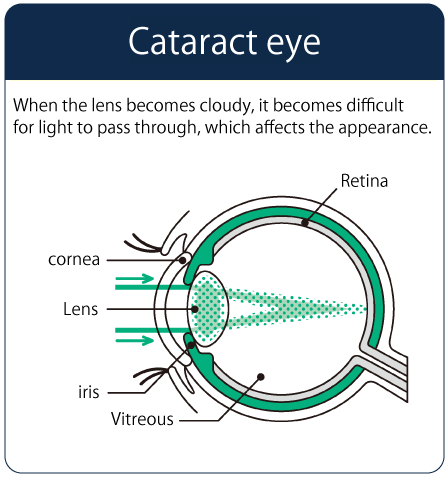
 Provided by : Japan Archon Co., Ltd.
Provided by : Japan Archon Co., Ltd. -
Causes of cataracts
Cataracts are congenital, associated with systemic diseases such as diabetes and atopy, associated with uveitis, side effects of drugs such as steroids, and those that occur after eye surgery such as retinal detachment and fundus hemorrhage. There are various things such as those caused by trauma, but the majority are caused by aging.
Age-related cataracts increase in risk with age from the late 40s, with 40-50% in the 50s, 70-80% in the 60s, and 80-90% in the 70s, this is a disease that most people will get.
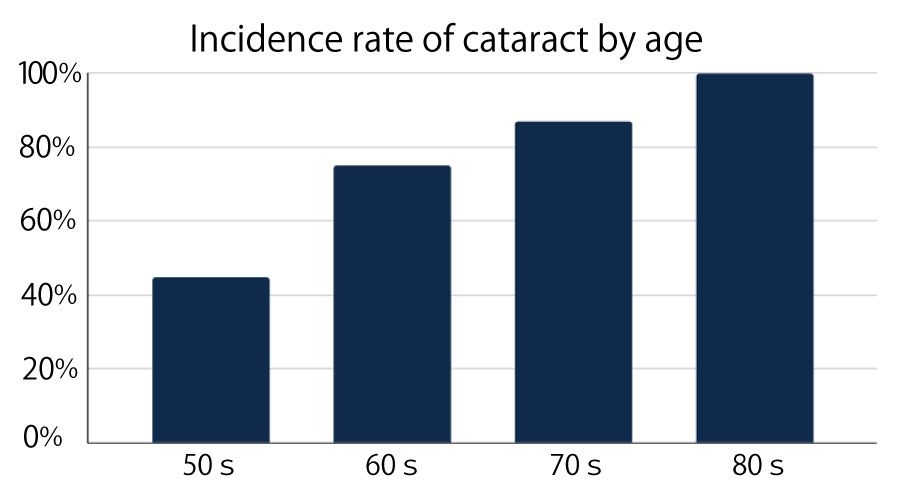
-
Classification by opaque part of the lens
Anterior subcapsular cataract: A type in which turbidity appears under the anterior capsule of the crystalline lens
Cortical cataract: A type in which turbidity appears in the cortex closer to the center than the lens sac
Nuclear cataract: A type in which the nucleus in the central part of the crystalline lens becomes cloudy
Posterior subcapsular cataract: A type in which turbidity appears in front of the posterior capsule of the crystalline lens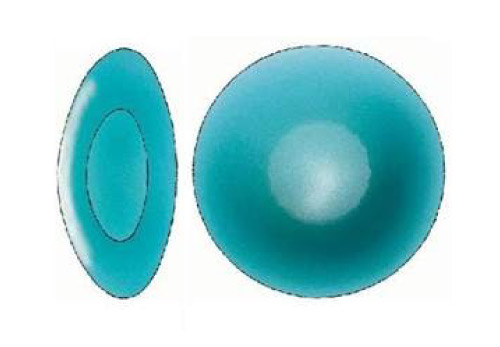
Anterior subcapsular cataract
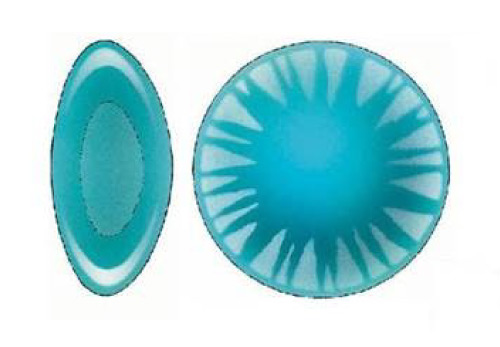
cortical cataract
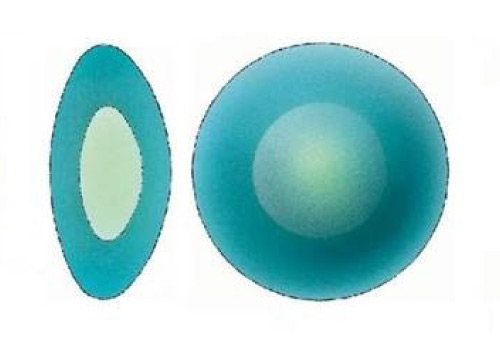
nuclear cataract

subcapsular (posterior subcapsular) cataract
-
Cataract symptoms
Symptoms of cataracts are typically hazy, blurry and double-looking, and poor eyesight, but there are also symptoms that are easy to get tired, dazzling in bright places, and bleeding at night.
As cataracts progress, not only do they become hazy and their eyesight deteriorates, but they also develop myopia and become difficult to see even when wearing glasses or contact lenses.
Cataracts usually progress slowly, so it often has few subjective symptoms and is unaware in the early stages, or even if one eye has cataracts and his eyesight is impaired, he is often unaware that the other eye is visible.
Whether or not you have cataracts cannot be determined from the subjective symptoms of the person, so it is often found only after seeing an ophthalmologist due to poor eyesight at a medical examination.Double vision

dazzling

halo

-
Prevention and treatment of cataracts
1. Prevention of cataract
Cataracts are caused by oxidative stress degeneration of crystalline lens proteins, so when you go out, use sunglasses, a wide-brimmed hat, a sunshade, etc. to prevent ultraviolet rays from entering your eyes, take care of eye strain, rest your eyes. Preventing lifestyle-related diseases such as diabetes and diabetes, actively ingesting vegetables and fruits containing vitamin E, B2 and C, eating a balanced diet, and quitting smoking to prevent oxidative stress and delay the occurrence of cataracts.



2. Eye drop treatment for cataract
In the early stages of cataract, medication may be given with eye drops (Cataline®, Curry Uni®, Tathione®, etc.).
These eye drops are said to have the effect of slowing the progression of cataracts by inhibiting protein denaturation of the crystalline lens, but it is currently no cure for cataracts.
In other words, the turbidity of the crystalline lens does not return to its original state, so when cataracts occur, surgery is performed to replace the turbid crystalline lens with an intraocular lens, which is an artificial crystalline lens. (*)
(*)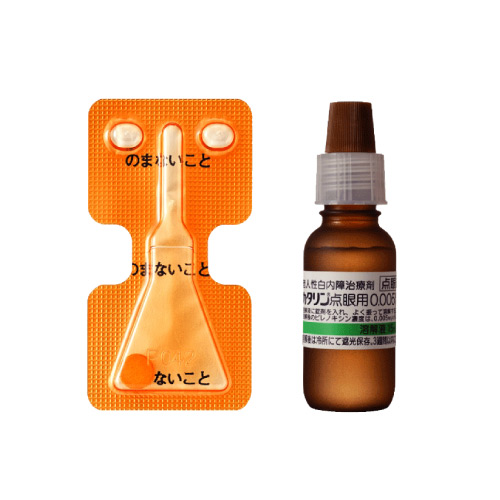
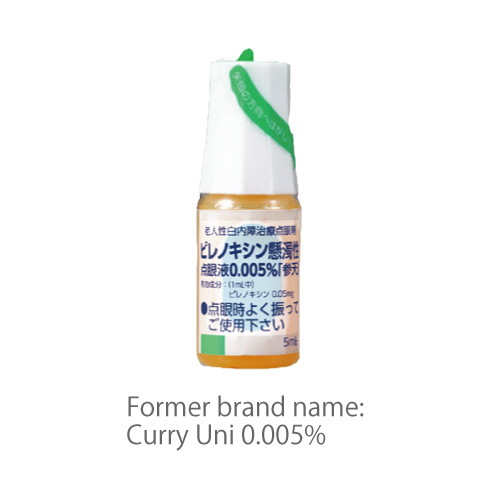
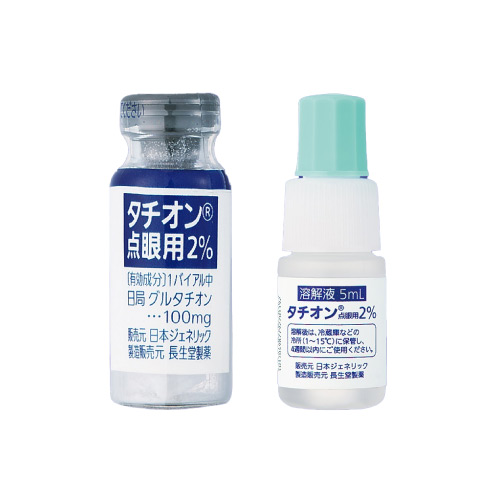 (*)Copyright: Santen Pharmaceutical Co., Ltd.
(*)Copyright: Santen Pharmaceutical Co., Ltd.3. Types and characteristics of intraocular lenses used for cataract surgery
1. Mono-focal intraocular lens and multifocal intraocular lens
Intraocular lenses used during cataract surgery include mono-focal intraocular lenses and multifocal intraocular lenses. The only lens that can be used in normal medical insurance is a mono-focal intraocular lens, and if you adjust the distance so that you can see it with the naked eye after surgery, you will need reading glasses for the near side, and conversely, if you adjust it so that the near side can be seen with the naked eye. Myopia glasses are required in the distance.
-
Intraocular lens selection
(mono focal / multi focal)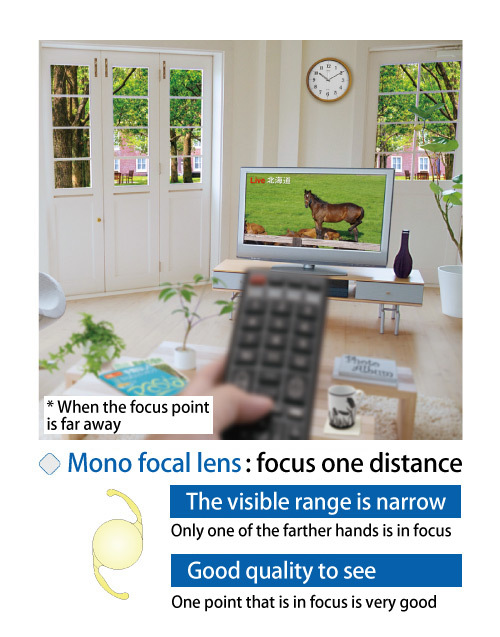
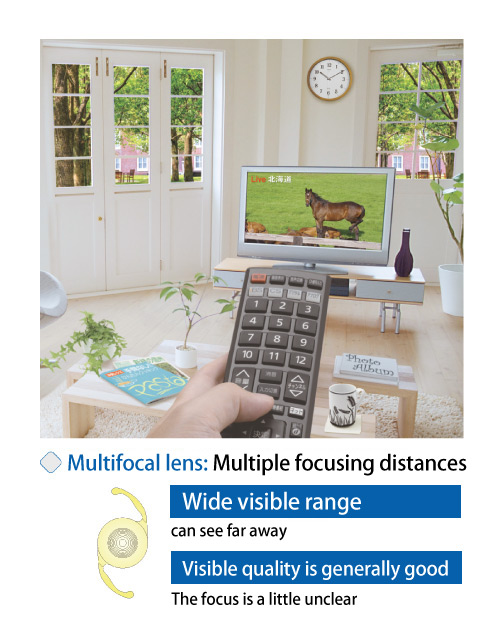 Provided by : Japan Archon Co., Ltd.
Provided by : Japan Archon Co., Ltd.2. Advanced medical care and evaluation medical treatment
Until March 2020, it was possible to perform surgery using some multifocal intraocular lenses in highly advanced medical care (life insurance benefits can be obtained and the actual burden is small), but after April Since cataract surgery for multifocal intraocular lenses has been removed from advanced medical care, it is now possible to use some multifocal intraocular lenses for evaluation treatment (additional charge similar to differential betting).
3. Non-insurance multifocal intraocular lens
Non-insurance cataract surgery is expensive, but it can be done with state-of-the-art laser cataract surgery, which uses a laser without a scalpel, and all types of intraocular lenses are also state-of-the-art.
Non-insurance cataract surgery can treat not only myopia, hyperopia, and astigmatism but also presbyopia.
In addition, some lenses are completely made-to-order, and the power of the lens is highly accurate according to each eye (as opposed to normal intraocular lenses, which are corrected in 0.50D units like eyeglasses and contact lenses. It is possible to create and use a lens with 50 times higher accuracy (correction in 0.01D units is possible).
What is cataract?
Humans gradually realize that it is hard to see near when we were around 40 years old.
This is because when you were young, you could adjust the focus by changing the thickness of the lens, but as you age, the focus adjustment function declines.
Recently, it seems that the time to become aware of presbyopia tends to be younger due to the increase in the usage time of personal computers, smartphones, and tablets.



